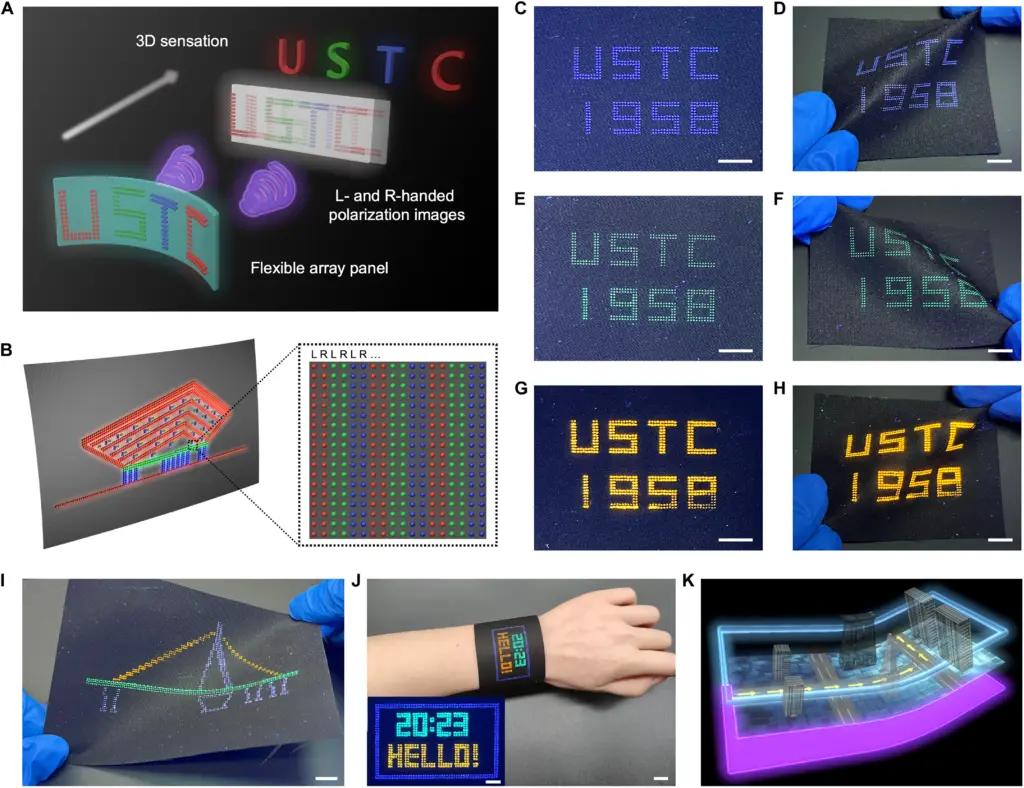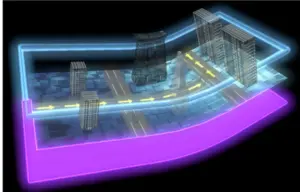Three-dimensional (3D) displays are an important technology for applications like scientific visualization, medical imaging, virtual prototyping, and entertainment. Traditional 3D displays use linear polarization which has limitations like narrow viewing angles and poor image contrast. Circularly polarized luminescence (CPL) materials can overcome these limitations and enable high-performance 3D displays. However, current CPL materials are not suitable for flexible displays due to limitations in processability. Now, researchers have developed a new method to produce printable CPL microspheres that can be used to create flexible 3D display panels.

CPL refers to the emission of left- or right-handed circularly polarized light from chiral luminescent materials. The dissymmetry factor (glum) quantifies the circular polarization purity, with higher absolute glum values indicating stronger CPL emission. CPL provides high image contrast and wide viewing angles for 3D displays compared to linear polarization.
Chiral liquid crystals (CLCs) are a type of soft matter that can self-assemble into helical superstructures. Doping CLCs with fluorescent dyes allows coupling the dye emission with the photonic bandgap of the CLC to generate intense CPL. However, conventional CLC mixtures are fluid liquids that require fixed cells or layers for device applications. This has prevented their use in printable flexible 3D displays.
Developing CPL materials that are processable into inks or paints is necessary to enable printing of CPL pixels on flexible substrates. This could lead to bendable emissive 3D display panels for next-generation electronics and wearables.
CPL Microsphere Synthesis
The researchers developed a method to encapsulate dye-doped CLCs into polymer microspheres to create particulate CPL-active photonic paints (CPL-PPs). The chiral nematic phase of the CLC is preserved within the microspheres.

The CLC precursors are emulsified with acacia gum solution. Gelatin solution is added and coacervation occurs when reducing the pH, causing gelatin-acacia shells to form around the CLC droplets. Cooling induces the chiral nematic phase in the CLC cores. Crosslinking the gelatin shells makes the polymer coating stable. This confines the fluid CLC mixture into solid microparticles.
The CPL-PPs are produced at large scale in a controllable process. Tuning the CLC precursor composition allows creation of red, green, and blue (RGB) emissive particles with left- or right-handed CPL. Combining two or three CPL-PP types produces full color palettes.
CPL Characterization
The dissymmetry factors of the CPL-PPs were measured using a CPL spectrometer. Strong CPL signals near the dye emission peaks are observed, with glum reaching 1.6. This high value results from the uniform helical morphology of the dye-doped CLC cores.
The CPL state was verified by placing samples between circular polarizers. The CPL-PP emissions are blocked by same-handed polarizers but pass through the opposite handedness, confirming the circularly polarized output.
The CPL-PPs retain over 80% of their initial glum value after 80 days in ambient conditions, indicating excellent stability. Their CPL strength decreases slightly above the CLC isotropic transition around 54°C due to changes in the photonic bandgap overlap.
Printing and Fabrication
The microparticle nature of the CPL-PPs makes them suitable for printing onto surfaces to create customized graphics and coatings. Patterns were directly printed onto polypropylene, cotton fabric, and polyester fabric using a nozzle extrusion printer. For scalable coatings, the paints were spray coated onto meter-long polyester fabric sheets. The fabrics maintain bright uniform CPL emission across the entire surface after printing. Chemical and mechanical durability tests showed the printed CPL-PPs withstand washing, abrasion, and solvent exposure, making them viable for emissive textiles.
The researchers printed two sets of RGB CPL-PP pixel arrays with opposite handedness onto polyester fabric to make a flexible 3D display prototype. Using a pair of circular polarizers, the left- and right-eye images can be selectively viewed, demonstrating stereoscopic capability.
The researchers concluded that encapsulating CLCs into polymer microspheres yielded processable CPL-active paints. The printed paints enable emissive graphics and coatings on flexible substrates. Fabricating dual circular polarization pixel arrays on fabric produced a textile-based flexible 3D display panel.
This work overcomes prior challenges in developing machinable CPL materials. The scalable production and printing capabilities pave the way for integration of high-performance CPL technology into next-generation bendable displays, wearables, and smart textiles. The simple and low-cost fabrication provides opportunities for commercialization.
Reference
Zhang, M., Guo, Q., Li, Z., Zhou, Y., Zhao, S., Tong, Z., Wang, Y., Li, G., Jin, S., Zhu, M., Zhuang, T., & Yu, S.-H. (2023). Processable circularly polarized luminescence material enables flexible stereoscopic 3D imaging. Science Advances, 9(43), eadi9944. https://doi.org/10.1126/sciadv.adi9944

